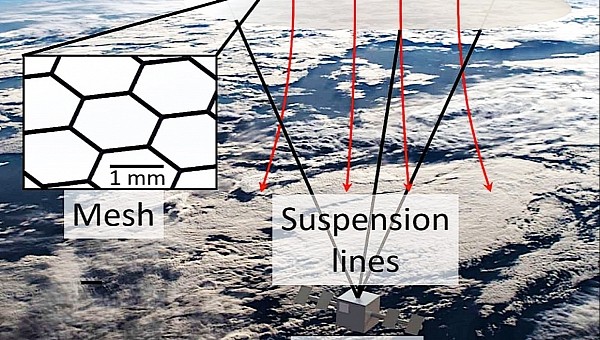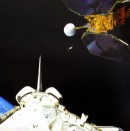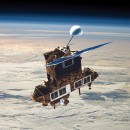Every January, the American Space Agency awards Phase I grants in something it calls the NASA Innovative Advanced Concepts (NIAC) program. It’s a recurrent effort to award the best ideas for the future of space exploration and connected activities in the hopes advancements can be made faster.
This year, NASA handed out $175,000 to no less than 14 concepts and ideas. We’ve already discussed one of them, the FLUTE, and now it’s time for something that might sound even stranger than a massive 50-meter (164-feet) telescope cast in space: tiny levitating vehicles.
Don’t get all worked up, we’re not talking about some Jetsons-style machine for personal transport, but about pieces of hardware meant to float high up in the air to study our planet’s higher atmosphere.
The idea for these levitating vehicles belongs to the University of Pennsylvania’s Igor Bargatin and has nothing to do with some piece of moving hardware meant to make levitation possible. Instead, it relies on photophoretic levitation, a process that occurs when something suspended in gas starts to move up when illuminated (and heated) from below.
More to the point, the researcher believes a solid mesh of some sort, capable of carrying a payload, can be heated through illumination while in the air, making it climb or maintain position in Earth’s mesosphere. That’s a place located between 50 and 80 km (31 to 50 miles) above the surface that’s extremely tricky to study, on account of it being too rarefied to support balloon or airplane flight, but at the same time, too dense for satellites.
Bargatin’s envisioned solution is at the time of writing just a plate under which a payload can be suspended. The scientist claims to have tested the idea on centimeter-scale plates using various air pressures and found the mesosphere is where these things perform the best.
We’re not told for now how big these vehicles would need to be to properly perform their duties and unlock the mesosphere’s secrets, but Bargatin refers to them as microflyers. A rendering provided by the author (main photo of this article) shows a cube-shaped structure attached to the mesh, with something that looks like sensors sticking out of it.
If they ever become a reality, levitating vehicles powered by light could evolve into machines that could stay up there for long periods of time, getting the energy they need from the Sun. An extended presence of human-made hardware in the mesosphere would help us better understand the processes that take place there, including when it comes to temperature, CO2 concentration, and wind speeds.
Alternatively, the Bargatin plates could also become means of trajectory control propulsion (of the horizontal kind) for stratospheric balloons.
As with all other projects included in this year’s Phase I NIAC program grants, the levitating vehicles proposed by Bargatin are still a long way from becoming a reality.
Don’t get all worked up, we’re not talking about some Jetsons-style machine for personal transport, but about pieces of hardware meant to float high up in the air to study our planet’s higher atmosphere.
The idea for these levitating vehicles belongs to the University of Pennsylvania’s Igor Bargatin and has nothing to do with some piece of moving hardware meant to make levitation possible. Instead, it relies on photophoretic levitation, a process that occurs when something suspended in gas starts to move up when illuminated (and heated) from below.
More to the point, the researcher believes a solid mesh of some sort, capable of carrying a payload, can be heated through illumination while in the air, making it climb or maintain position in Earth’s mesosphere. That’s a place located between 50 and 80 km (31 to 50 miles) above the surface that’s extremely tricky to study, on account of it being too rarefied to support balloon or airplane flight, but at the same time, too dense for satellites.
Bargatin’s envisioned solution is at the time of writing just a plate under which a payload can be suspended. The scientist claims to have tested the idea on centimeter-scale plates using various air pressures and found the mesosphere is where these things perform the best.
We’re not told for now how big these vehicles would need to be to properly perform their duties and unlock the mesosphere’s secrets, but Bargatin refers to them as microflyers. A rendering provided by the author (main photo of this article) shows a cube-shaped structure attached to the mesh, with something that looks like sensors sticking out of it.
If they ever become a reality, levitating vehicles powered by light could evolve into machines that could stay up there for long periods of time, getting the energy they need from the Sun. An extended presence of human-made hardware in the mesosphere would help us better understand the processes that take place there, including when it comes to temperature, CO2 concentration, and wind speeds.
Alternatively, the Bargatin plates could also become means of trajectory control propulsion (of the horizontal kind) for stratospheric balloons.
As with all other projects included in this year’s Phase I NIAC program grants, the levitating vehicles proposed by Bargatin are still a long way from becoming a reality.






